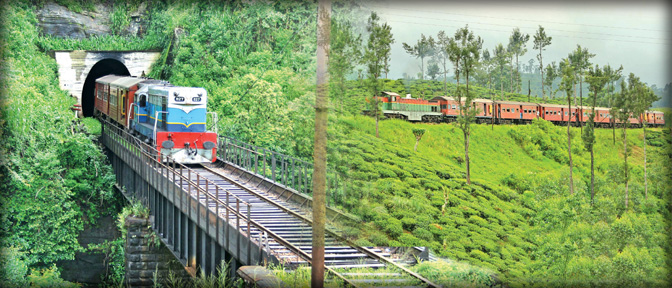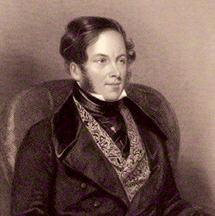|
150 years and still going strong:
Demand for train travel on the increase
By Gamini Warushamana
 The Sri Lanka Railways (SLR) marked 150 years of service to the
country on December 24, 2014. The service was launched by British mainly
for the transportation of goods from upcountry plantations. The Sri Lanka Railways (SLR) marked 150 years of service to the
country on December 24, 2014. The service was launched by British mainly
for the transportation of goods from upcountry plantations.
The first discussion to construct a railway line was held in 1845 and
in the same year, the Ceylon Railway Company was set up and the project
finalised.
However, the launch of the project was delayed for another decade.
Construction work on the railway track from Colombo to Kandy was
launched on August 3, 1858 by then British Governor in Sri Lanka, Henry
George Ward.
By August 1864, the first phase of the 34-mile railway line from
Colombo to Ambepussa was completed and on December 27, 1864 the train
service was launched.
After one-and-a-half centuries the railway service has now become one
of the main modes of transport for commuters and goods. However, some
critics describe it as a monster that has become a burden to the State
budget, because it does nor earn profits in financial terms.
But transportation experts say that this service is neglected and
underutilised and its huge potential can be used to address
transportation issues in a sustainable way.
Subsidy
Commercial Superintendent, Sri Lanka Railways (SLR), Sisira Kumara
said that the CGR is not a burden on the economy and if correctly valued
the service it provides is profitable.
|

Governor Henry George Ward |
He said that in 2013, the CGR earned a revenue of Rs.5.4 billion and
the total financial loss disbursed as a subsidy by the Treasury was Rs.
5.8 billion.
Passenger transportation is the main source of revenue and in 2013
SLR earned Rs.3.55 billion by transporting passengers in addition to Rs.
930 million from season tickets where subsidies range from 60-90
percent.
A large number of government and private sector employees and
students enjoy this subsidy. In 2013, revenue from passenger
transportation increased by 20 percent compared to 2012.
The demand for railway services has been increasing in recent years
and as as a result the revenue from passenger transportation too is
increasing.
For instance revenue in the first three quarters of 2014 was 12
percent higher compared to 2013.
The reasons for this increase are extension of the Northern track,
improvement of services with new power sets and carriages, reduced train
delays after track development and signal system improvements.
"In the recent past, huge investments came into SLR and generally we
are in a position to provide better service," Sisira Kumara said.
He said SLR makes profits though the books show a huge loss.
The value of the subsidy given in 2013 for season tickets was Rs. 2.8
billion. The train fare has not been revised since 2006 even though the
price of oil was increased several times.
As a result the train fare is 50 percent lower than bus fare and for
instance the Colombo-Kalutara train fare is Rs. 40 whereas the bus fare
is Rs. 60. Therefore, through price revision alone SLR can raise its
revenue by 50 percent and by price revision and abolishing subsidies,
SLR can become a profit-making venture.
Not only the financial gains, the economic benefits to the country
through the services provided by SLR should be taken into account. SLR
operates 320 trains a day and carries over 500,000 passengers a day.
Traffic congestion
"Daily, we bring over 300,000 passengers to Colombo and our
contribution to ease traffic congestion in the road network and
resulting cost saving should also be considered. Travel time by train is
50 percent less compared to travelling by road," Sisira Kumara said.
"For instance the travel time between Colombo and Kalutara is 2.5
hours. But we bring passengers within 40 minutes or a maximum of one
hour. We transport 200,000 people to Colombo daily and the financial
value of saved working time should also be taken into account," he said.
However, revenue from transportation of goods has been declining. In
2012, revenue from goods was Rs. 462 million and in 2013 it declined to
Rs. 412 million.
Kumara said that the main reason for this trend is the development of
the road network with which the CGR cannot compete. Since there is no
significant development in the industrial sector in the country new
demand cannot emerge for the transportation of goods.
"However, we expect significant improvement in revenue from
transportation of goods after completion of several projects in the
future. The extension of the railway line from Matara to the Hambantota
port, reconstruction of the Kankesanthurai and Thalimannar railway
tracks will create demand for the transportation of goods," he said.
According to Dr. Lalithasiri Gunaruwan of the Department of Economics
of the University of Colombo, the railway service had been neglected and
investments to develop infrastructure and rolling stocks had not been
channelled to it for over three decades until 2006.
New carriages were not added to the service from 1992 to 2006, over
13 years. Dr. Gunaruwan who was the General Manager of SLR and a former
Secretary to the Ministry of Transport said that transport sector issues
can be solved only by developing the railway service.
He said that the Sri Lankan railway service has a glorious history
from British colonial era. Local knowledge and skills were used to build
the railway tracks, carriages and machinery. Reports of British
Governors to the Imperial government in the 1890s have said that locally
manufactured carriages were of higher quality compared to imported
carriages.
Profitability
In the first 50 years after the launch of the service it earned
profits and the main revenue was from the transportation of goods. The
railway was a low cost, reliable and time saving mode of transport for
planters.
Since there was no developed road network, the railway had the
monopoly in the transportation of goods. The service started to
deteriorate due to several reasons such as development of the road
network, situation created after First and Second World wars, low
investments and negligence.
In the 1990s some of the railway tracks, Nanuoya to Ragala,
Avissawella to Yatiyantota were abandoned.
This trend could be seen not only in Sri Lanka but in all parts of
the world. The main reason for the deterioration of the railway service
is the development of the road transportation system.
The competition is unfair because road transportation enjoys all
infrastructure such as roads and traffic signals, free, while the
railway has to maintain all these with its own money.
As a result, the railway was considered a monster that has become a
fiscal burden on governments. However, since about a decade ago, this
perception has been changing globally.
Environmental pollution, traffic congestion on roads and the high
rate of road accidents has compelled transportation strategists to look
at railway in a new light.
Several solutions
Thailand is the best example in this scenario. Thailand mainly uses
the railway for the transportation of goods and the road network played
the main role in passenger transportation.
With increasing traffic congestion, solutions such as flyovers and
expressways were constructed, but every year traffic congestion
intensified even on the expressways. The railway has been now considered
as the best alternative to address transport issues. Hong Kong too has
followed suit.
Transport experts have proposed several solutions based on the
expansion of the railway line to address Colombo and suburb traffic
congestion.
Renovation of the rail track up to the Sapugaskanda refinery and
providing service to Kelaniya, Biyagama and Delgoda is one project.
Renovation and use of the Bloemendhal line up to Colombo port is
another.
The Kolonnawa line can be also used to provide transportation to the
Wellampitiya area.
The extension of the Kelani Valley line to Battaramulla is another
important project proposal considering the present traffic congestion in
the Jayewardenapura and Kotte areas. These project proposals are the
most practical solutions for another 10 years compared to the other
options, he said. |

